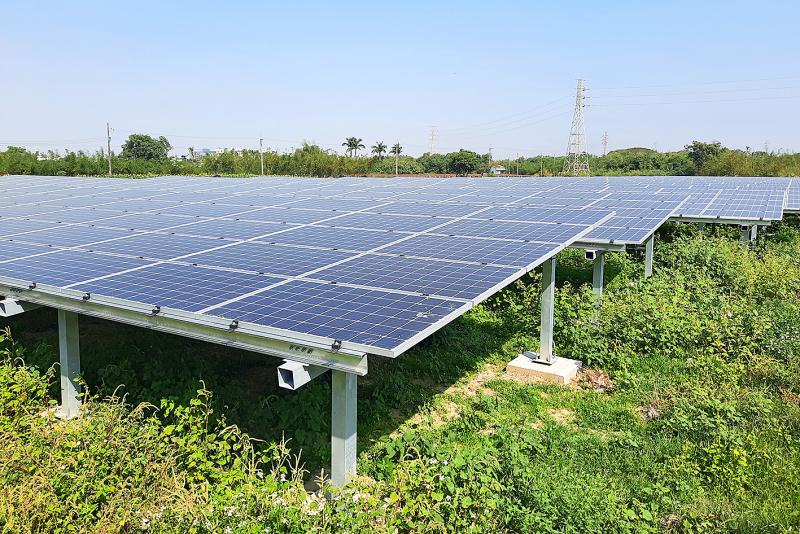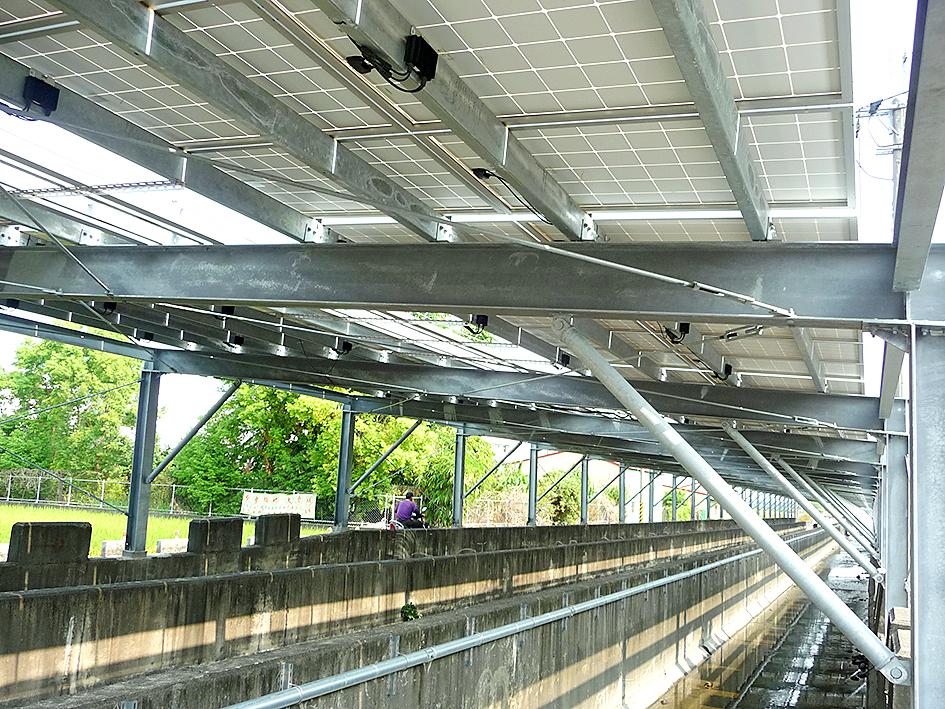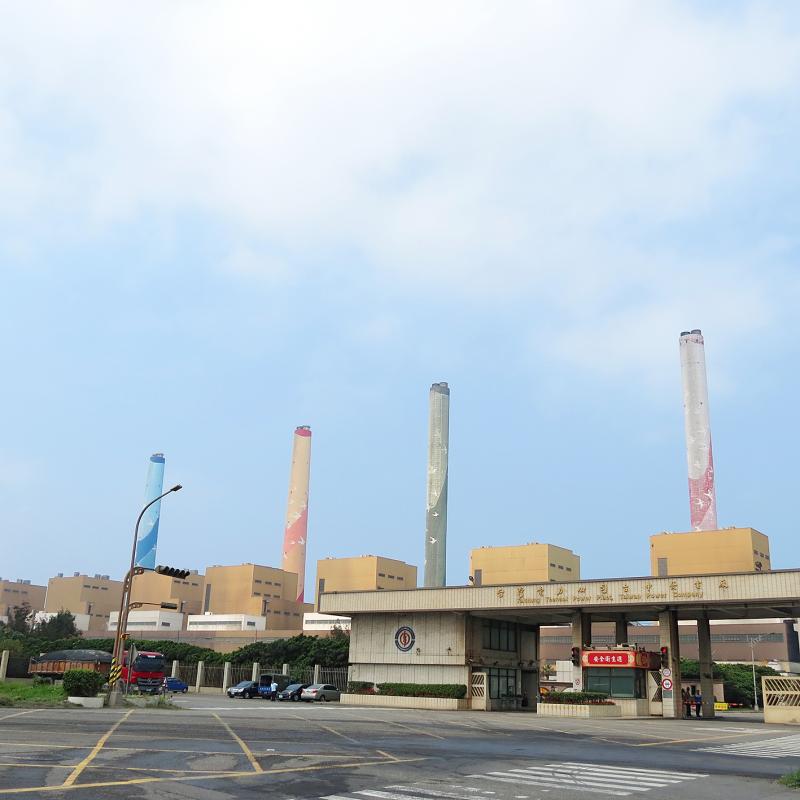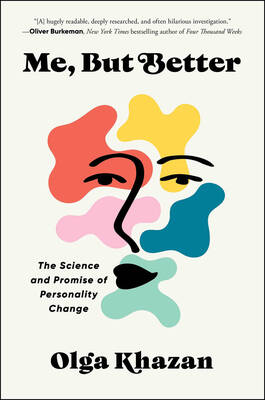Russia’s invasion of Ukraine has left European governments scrambling to ensure that their energy needs will be met. Germany — the no 1 buyer of Russian gas in recent years — is said to be reconsidering a commitment to close down its last few nuclear power stations at the end of this year, while a political deal made late last year to phase out coal by 2030 may well unravel. Several smaller economies, among them Bulgaria and Finland, are even more dependent on Russian gas than Germany.
Taiwan isn’t so exposed. Last year, 14.7 percent of the coal burned in Taiwan came from Russia. (Australia and Indonesia supplied most of the rest.) In the same period, Russia supplied 9.2 percent of this country’s LNG (liquified natural gas). Just before war broke out, CPC Corp, Taiwan (CPC, 台灣中油) announced that its current LNG contract with Russia, which expires this month, would not be renewed. Taiwan hasn’t bought oil from Russia since 2016.
Yet, as those who experienced the March 3 outage know all too well, Taiwan isn’t in a good place when it comes to guaranteeing electricity supplies to homes and businesses. What’s more, given the country’s dependence on fossil fuels, it isn’t obvious how Taiwan can keep the lights on if it’s to achieve the “net-zero carbon emissions by 2050” goal that’s been announced and reiterated by President Tsai Ing-wen (蔡英文).

Photo: Steven Crook
Net zero or carbon neutrality means that all human CO2 emissions are canceled out by carbon removals, for example by expanding wetlands and woodlands, or via carbon capture/sequestration technologies. The greater a country’s CO2 emissions, it goes without saying, the more difficulty it’ll have getting to net-zero.
One reason why Taiwan’s carbon emissions have barely declined in recent years, despite the government’s late-in-the-day enthusiasm for renewable energy, is the country’s ongoing dependence on coal.
Even if it didn’t put massive amounts of carbon dioxide in the atmosphere, burning coal would still be an awful way to generate electricity. Particulate matter and gaseous pollutants released by power stations elevate the risk of health problems including lung cancer, respiratory diseases in children and adults and strokes.

Photo: Steven Crook
In addition, the burning of coal releases sulfur dioxide and nitrogen oxide, which causes acid rain. This harms crops, forests and soils.
In terms of average CO2 emissions per kWh of electricity generated, the coal that fuels several local power stations is more than twice as “dirty” as LPG.
According to the Oxford University-affiliated Web site Our World In Data, coal was responsible for 56.4 percent of Taiwan’s carbon emissions in 2020, down from 58.8 percent in 2010, but higher than 2000’s 48.6 percent.

Photo: Su Chin-feng, Taipei Times
Co2 isn’t the only greenhouse gas (GHG) of significance. Methane also drives climate change. Tonne for tonne, it traps far more heat than carbon dioxide. It doesn’t persist for so long as CO2 — but given that humanity has, at best, just a few decades to head off climate catastrophe, its estimated half-life of 9.1 years may be enough to tip the scales in our disfavor.
In terms of methane emissions, coal is even more problematic than previously thought. According to an analysis published last week by Global Energy Monitor, methane emissions from active and abandoned coal mines worldwide are greater than those from either the global oil or the global gas sectors, and considerably higher than estimates issued by the International Energy Agency and US Environmental Protection Agency.
According to the Ministry of Economic Affairs (MOEA) Web site, Taiwan’s energy policy is to burn more LPG and less coal, expand renewable energy and decommission the final few nuclear reactors, while ensuring a stable power supply and reducing air pollution and GHG emissions.
Back in Oct. 2017, then-vice president Chen Chien-jen (陳建仁) said that Taiwan is “likely” to phase out its coal-fired power plants by 2050. However, no such commitment appears on the MOEA Web site, and neither the ministry nor the Bureau of Energy responded when asked by this reporter if there’s a timeline for decommissioning all of Taiwan’s coal-burning power stations.
In Aug. 2019, Vice Minister of Economic Affairs Tseng Wen-sheng (曾文生) said the use of coal would gradually decrease, and account for no more than 27 percent of the energy mix by 2025.
According to a Taiwan Power Co Web page which shows in real time how much electricity each of the state-run utility’s plants and its private-sector suppliers are producing, at 9am on Mar. 20 this year, 37.8 percent of the country’s power was being generated by coal-fired power stations.
Canada, New Zealand and most of Western Europe have pledged to close their coal-fired power plants by 2030. South Korea, Chile and Sri Lanka will do so by 2040. Several more countries, including Indonesia and Vietnam, expect to exit coal before 2050. China, India and Australia have yet to make any such promises.
National Development Council Minister Kung Ming-hsin (龔明鑫) said recently that, at the end of this month, the government will publish a detailed plan showing how Taiwan can attain net-zero by the 2050 deadline. It’d be surprising if the proposals don’t include a timetable for leaving coal behind. But whether it’ll be a realistic road map is another matter.
According to the government’s ambitious renewable-energy targets, between early 2020 and 2025, solar power capacity should grow almost fivefold to 20 GW, while wind power should increase ninefold to 7.7 GW.
Observers aren’t convinced that Taiwan will reach either goal.
On Dec. 29 last year, the TechNews Web site reported that, because of soaring raw material prices and supply-chain disruptions caused by the COVID-19 pandemic, total photovoltaic capacity installed last year was set to fall short of the target for the year by at least 40 percent.
MOEA Vice Minister Tseng told the Jan. 5 issue of CommonWealth magazine that the government had revised FIT (feed-in tariff) rates, to ensure rising costs wouldn’t slow the rate of installation.
Marine energy entrepreneur Manuel Zehr says he wouldn’t be surprised if internal politics and conflicts prevent Taiwan from reaching its 2025 wind-power goals.
The founder-CEO of Formosan Business Support Co says the Bureau of Energy (which establishes procedures) and the MOEA’s Industrial Development Bureau (which sets standards) are both understaffed. What’s more, he says, “their sole consultant is the Industrial Technology Research Institute (ITRI), which doesn’t devote any real resources to the issue. Instead of increasing efforts to solve it once and for all for the public sector, ITRI seeks yes-sayers within its organizational structure — for example, Sinotech Engineering Consultants Ltd — and never questions nonsensical ideas and explanations.”
Until 1962, hydro power was Taiwan’s no 1 source of electricity. Unfortunately, there’s little scope for expansion due to a lack of suitable sites.
Geothermal energy shows potential, but it won’t play a significant role for decades, if ever. The same is true for tidal and ocean-current power (see “Could energy from tides and ocean currents power Taiwan?” in the Sept. 22, 2021 edition of this newspaper).
On May 12 last year, the Bureau of Energy published a forecast that electricity demand in Taiwan would grow by an average 2.5 percent annually until 2027. The upward trend in consumption, together with delays affecting the renewables rollout and the LNG receiving terminal at Datan (大潭) in Taoyuan, prompted CommonWealth magazine on Jan. 5 this year to predict that, until Taiwan has greater energy storage capacity, there’ll be a risk of outages, and “Taipower will face tremendous pressure.”
A restructured electricity tariff in combination with smart meters (which gather data on power usage) and the Internet of Things (IoT) could help manage household power consumption.
On summer afternoons when every air-conditioning unit is running, IoT technology might prevent grid-overload by switching off refrigerators inside homes for 30 or 60 minutes. It could also remotely suspend the recharging of electronic devices, and adjust air-conditioning systems to temperatures no lower than, say, 23 degrees Celsius.
This kind of technology sounds intrusive, and in a sense it is. But surely it’s a more tolerable form of intrusion than air pollution caused by the burning of coal, or extreme weather brought about by climate change.
Steven Crook, the author or co-author of four books about Taiwan, has been following environmental issues since he arrived in the country in 1991. He drives a hybrid and carries his own chopsticks. The views expressed here are his own.

Last week, the the National Immigration Agency (NIA) told the legislature that more than 10,000 naturalized Taiwanese citizens from the People’s Republic of China (PRC) risked having their citizenship revoked if they failed to provide proof that they had renounced their Chinese household registration within the next three months. Renunciation is required under the Act Governing Relations Between the People of the Taiwan Area and the Mainland Area (臺灣地區與大陸地區人民關係條例), as amended in 2004, though it was only a legal requirement after 2000. Prior to that, it had been only an administrative requirement since the Nationality Act (國籍法) was established in

Three big changes have transformed the landscape of Taiwan’s local patronage factions: Increasing Democratic Progressive Party (DPP) involvement, rising new factions and the Chinese Nationalist Party’s (KMT) significantly weakened control. GREEN FACTIONS It is said that “south of the Zhuoshui River (濁水溪), there is no blue-green divide,” meaning that from Yunlin County south there is no difference between KMT and DPP politicians. This is not always true, but there is more than a grain of truth to it. Traditionally, DPP factions are viewed as national entities, with their primary function to secure plum positions in the party and government. This is not unusual

The other day, a friend decided to playfully name our individual roles within the group: planner, emotional support, and so on. I was the fault-finder — or, as she put it, “the grumpy teenager” — who points out problems, but doesn’t suggest alternatives. She was only kidding around, but she struck at an insecurity I have: that I’m unacceptably, intolerably negative. My first instinct is to stress-test ideas for potential flaws. This critical tendency serves me well professionally, and feels true to who I am. If I don’t enjoy a film, for example, I don’t swallow my opinion. But I sometimes worry

US President Donald Trump’s bid to take back control of the Panama Canal has put his counterpart Jose Raul Mulino in a difficult position and revived fears in the Central American country that US military bases will return. After Trump vowed to reclaim the interoceanic waterway from Chinese influence, US Defense Secretary Pete Hegseth signed an agreement with the Mulino administration last week for the US to deploy troops in areas adjacent to the canal. For more than two decades, after handing over control of the strategically vital waterway to Panama in 1999 and dismantling the bases that protected it, Washington has